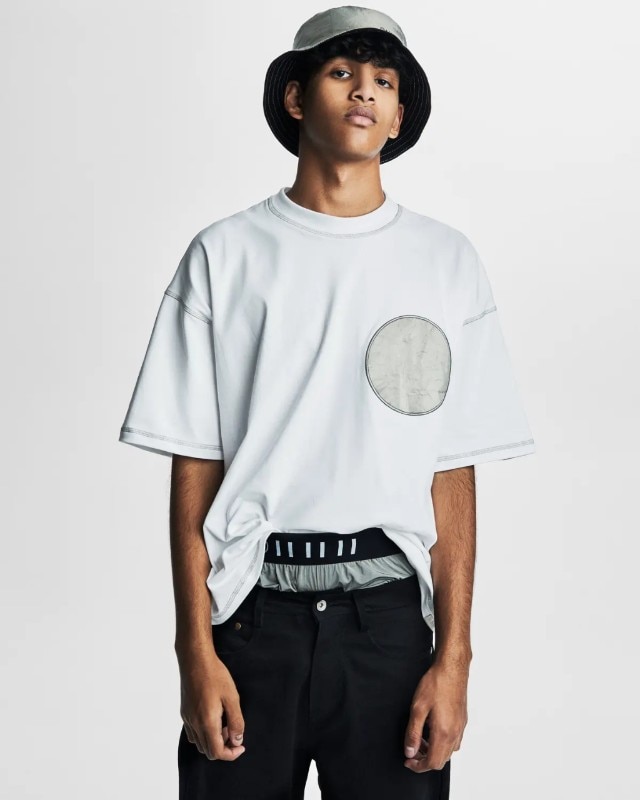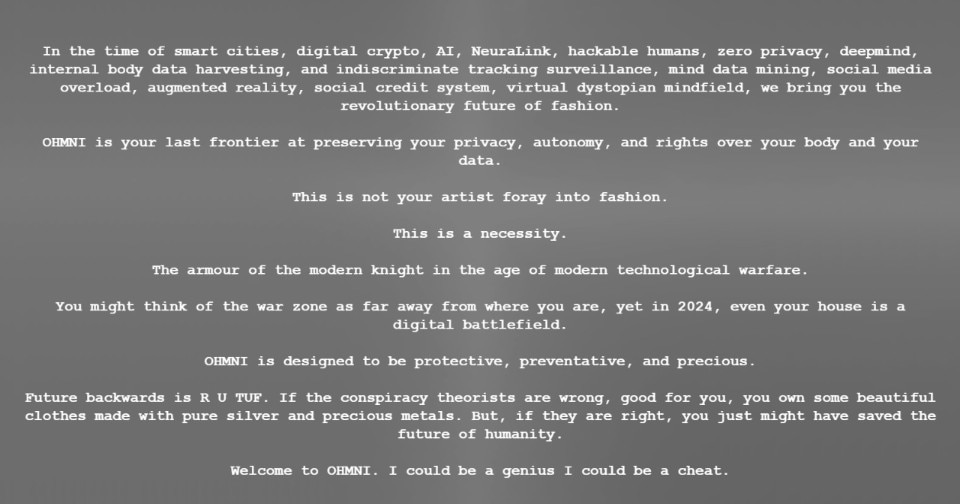Rap has long been intertwined with conspiracy theories. From Prodigy of Mobb Deep’s obsession with the Illuminati to Kanye West’s outlandish ideas, many rappers have used conspiracies to make sense of the world around them. Rap also has deep roots in the fashion industry, with brands like Jay Z’s Rocawear, Puff Daddy’s Sean John, Asap Rocky’s modeling career, and Pharrell Williams’ designer ventures.
Yet, no one had combined these two historical passions until now to create a fashion brand with a strongly conspiratorial spirit. Yet M.I.A., the 48-year-old rapper behind global hits like Paper Planes and Bad Girls, filled this gap nobody knew existed. And above all, for the past five years, he also has been a vocal conspiracy theorist, especially about 5G.

In 2019, she tweeted on X (still Twitter at the time), “In 10 years all of us will mutate into radioactive cyborgs.” Approaching the halfway mark of this ominous prediction, M.I.A. has moved from words to action by launching a fashion brand called Ohmni. This brand offers clothing made from materials designed to protect against 5G – but also 4G, 3G, WiFi, etc. − satellites, GPS, and more.
If you’ve been reminded of the bizarre aluminum headgear that the most paranoid of the truthers use to take cover, you’re not far off – we’re right around that corner. Among Ohmni's products is the “brain-protecting durag,” – featuring M.I.A. herself has the model. This durag claims to shield the wearer from 99.9% of radiation by 5G (etc.) and completely repair our brains and necks.

Despite the disclaimer on the website stating that “Any reliance on the information provided on this website is at your own risk” and “Ohmni shall not be held liable for any direct, indirect, consequential, special, exemplary, or other damages arising from the use of our products” it a small price to pay for those who “In the time of smart cities, digital crypto, AI, NeuraLink, hackable humans, zero privacy, deepmind, internal body data harvesting, and indiscriminate tracking surveillance,” want to own “the armour of the modern knight in the age of modern technological warfare.”
A future where specific devices prevent our thoughts from being monitored at work or where people wear masks and T-shirts to avoid facial recognition using the adversarial attack graphic strategy might be closer than we think.
Among the products there are the classic aluminum cap ($100 – even though a bit more stylish than those you see at chemtrails conventions), a “data protection” bag ($100), an “armor” T-shirt ($200), fertility-protecting boxers ($50), and more.
The most expensive item is a $400 puffer, featuring – according to the description − a removable hood with 100% copper lining (to protect against radiation). But that’s not all: “This garment features a secret faraday cage pocket, allowing you to drop off the grid, disconnecting your devices Wi-Fi and Data, becoming instantly untraceable and unhackable. With its unique atomic structure, Copper offers exceptional electrical conductivity, deflecting electromagnetic waves such as Wi-Fi & 5G with up to 99.999% shielding effectiveness.”
$400 to become a tech rebel and protect yourself from radiation. Sounds like a bargain, doesn’t it? Dismissing this as a mere marketing strategy or the madness of a paranoid person obsessed with conspiracy theories would be all too easy − especially since M.I.A. launched her brand in the living room of the far-right extremist and ultra-conspiracy theorist Alex Jones. However, if we look deeper, there are interesting elements in M.I.A.’s operation.

First of all, the brand doesn’t only focus on 5G paranoia. It touches on themes that, even though the assumptions are always conspiratorial, may be worth considering. In fact, this is undoubtedly the era of “indiscriminate tracking surveillance” – just think about the spreading of the facial recognition technology − and the diffusion of the extraction of data directly from our brains – as much as it sound like stuff straight out of Black Mirror, unfortunately it is not the case.
A future where specific devices prevent our thoughts from being monitored at work – like it’s happening in China − or where people wear masks and T-shirts to avoid facial recognition using the adversarial attack graphic strategy might be closer than we think. The same applies to the possibility of protecting our privacy by locking our smartphones inside bag-sized Faraday cages.
While M.I.A.’s assumptions are highly questionable, not to mention the fact that the whole operation could be a marketing move exploiting others’ gullibleness, yet as it’s often the case with conspiracy theories, filtering out the more paranoid and grotesque elements can reveal aspects worth discussing. Even when it comes to fashion.
Timeless icons: the Marenco sofa by arflex
Designed by Mario Marenco, this masterpiece of Italian design has set the standard for over fifty years.




